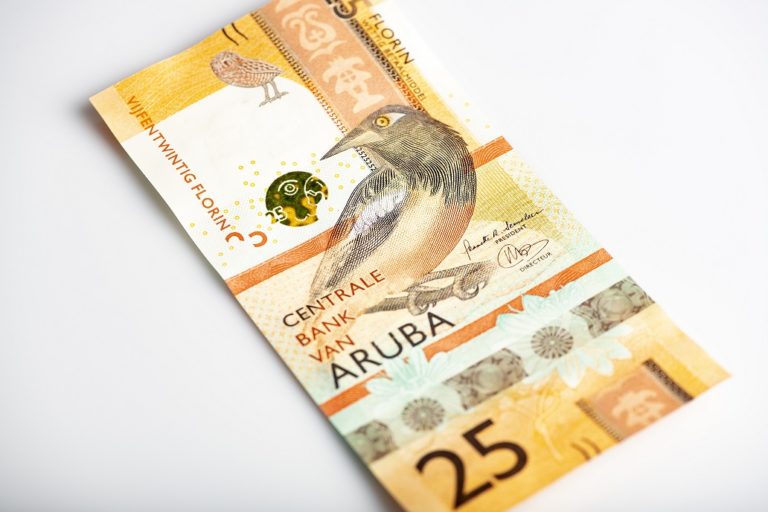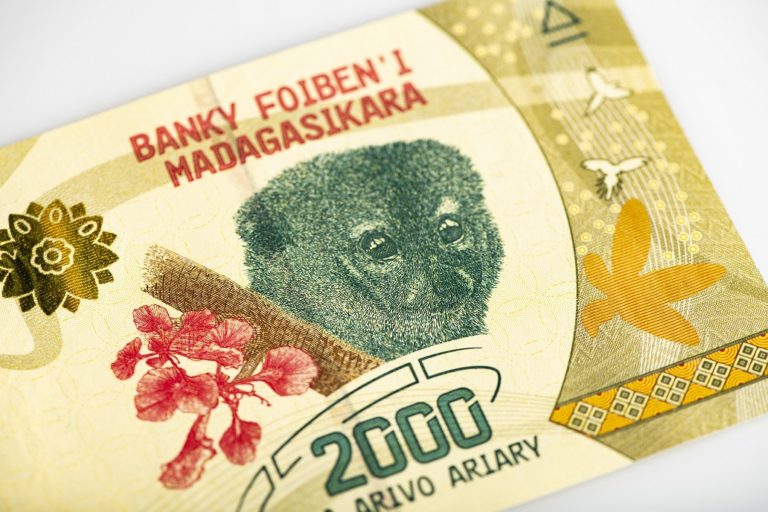50 Fijian Dollars
The Tagimoucia can be seen hanging from the corner of Fiji’s 50 dollar banknote. This beautiful species of flowering plant is endemic to the highland rainforest of the Fijian island of Taveuni, and only grows in the cold volcanic region high up in the mountains. Fiji is home to about 800 species of plants found nowhere else in the world.
The Tagimoucia is close to the hearts of native Fijians as it is associated with one of the tales they grew up with. Legend has it that long ago, a princess loved another man despite being in an arranged marriage. She desperately fled her village and found herself by the shores of Lake Tagimoucia. Exhausted, she fell asleep with tears trickling down her cheeks and eventually turned into the beautiful red flowers. Tagimoucia means ‘to cry in your sleep’.
100 Fijian Dollars
The Cicadas, shiny-backed yellow-coloured tree bugs are a native to Viti Levu, Fiji’s largest and main island. These magnificent creatures only make an appearance in Fiji once every eight years but can be found circulating daily on the nation’s 100 Dollar banknote.
ARUBA

Copyright © 2019 | CashEssentials
25 Aruban Florin
Aruba’s 25 Florin banknote features an array of yellow shades surrounding the Aruban Burrowing Owl, also known locally as Shoco. Burrowing Owls get their common name from their unusual habit of nesting underground in already dug-out burrows, although they are known to occasionally dig out their own.
And here’s a little fun fact: this banknote was nominated for “Banknote of the Year 2019” by the International Banknote Society, alongside the 5 Pound of Northern Ireland and the 1000 Franc of Switzerland. However, less fun is the fact that this species is now endangered with estimates of less than 200 pairs remaining. While the owl is not currently protected in Aruba, many conservation efforts, such as by the Aruba Birdlife Conservation Foundation, are underway to ensure that it does not go extinct.
MADAGASCAR

Copyright © 2019 | CashEssentials
2000 Malagasy Ariary
Native only to the Island of Madagascar, Lemurs can also be found meandering on the country’s 2000 Malagasy Ariary banknote. These wide-eyed, furry creatures are, however, under threat of extinction as a result of destruction to their tropical forest habitat due to slash-and-burn agriculture, illegal logging, charcoal production and mining.
SUSTAINING ALL LIFE ON EARTH
These banknotes highlight the beauty Mother Nature has to offer but environmental threats are increasingly prevalent, and there is an urgent need for governments, civil society, private sector actors and individuals to add their voices and take actions to help conserve wildlife and ensure its continued use is sustainable.
Like the environment, banknotes have also been facing its own issues. As much as digital payments have a place in the payments’ ecosystem, the use of cash shouldn’t fall under the threat of ‘endangered species’.

